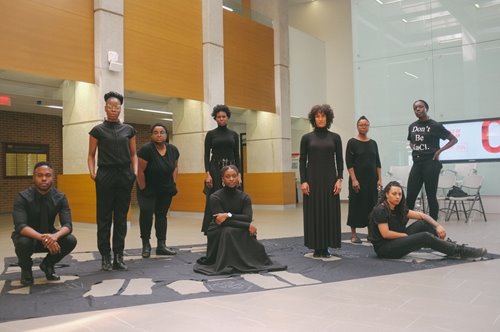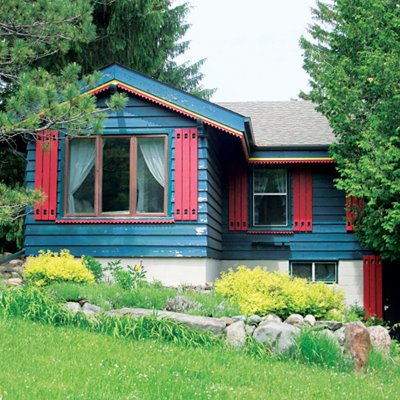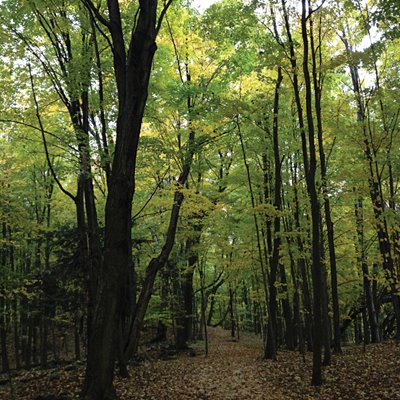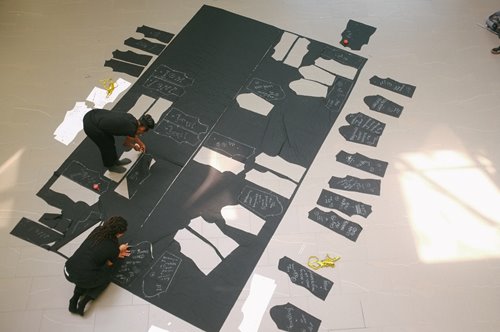August 2022
Anique Jordan is a writer and curator, and was the recipient of the Toronto Arts Foundation Emerging Artist Award in 2017. The award was renamed the Breakthrough Artist Award in 2022. As part of the award, she received a complimentary week-long stay at Valleyview Artist Retreat.
Located in the beautiful country setting of Caledon, Valleyview Artist Retreat offers artists and arts administrators from all disciplines the opportunity to pursue their work without interruption or pressure to create. We recently spoke with Anique about her time at Valleyview Artist Retreat, its value and the project she was pursuing while staying there.

Photo credit: Fatin Chowdhury


Photos of Valleyview Artist Retreat and surrounding property
1. What is the importance of artist retreats for productive artistic creation?
When it comes to artistic creation, accessibility to space plays a critical role. Artist retreats are especially important living in Toronto, where having space comes at a premium. The work of artists is often put to the margins and sort of relegated to a type of luxury or as something you can do if you have time to do it. Which is why there is not a lot of affordable infrastructure that is offered to artists. To be able to go to a space where you can immerse yourself in your own thoughts, creative processes, and be surrounded by other artists that are equally working on their own projects is a real blessing. These spaces offer us something that the busyness of the city and our lives don't offer.
2. Can you please describe the Valleyview Retreat and your experience there?
I used the Valleyview Retreat to create a group retreat for Black artists. I invited 5 other artists to come up with me, with the goal to build relationships with one another and share in the opportunity together. I recognize that this opportunity is not something we often have access to. We spent some time communing together, working on our individual projects and also diving deep into the research of the work I was creating at the time.
3. Can you tell us what you were working on while you were there and if you managed to accomplish it?
I was working on a project which is now called Evidence. A project that was continuing work that I did years prior, that was looking at the archive documentation of the life of a Black woman who grew up in the city of Toronto, named Clara Ford. In 1895, she was arrested and accused of murdering a young white man of a wealthy family named Frank Westwood. We were reviewing the documents from her case, a book that talks largely about her life and all of the transcripts I was able to find about the trial. And we would gather to talk things through. We were discussing the impact of the case and her life today; What was going on in our lives? What is going on in the lives of people in the communities surrounding us? And what does it mean for us to look at this history now? We were thinking about how there is no removal from the things that we find in the archive and from our experiences today, particularly as Black people that live in the same city. Eventually, these discussions and research led to a major performance that was done at Osgoode Law School, which included a sonic replaying of her trial case along with a recording of the ways that we were analyzing the case, today.
4. Did the retreat help you get "in the zone." If yes, can you tell us what that term means for you?
For me, it is difficult to create independently. I can’t get in the zone on my own. I like having people around me for dialogue and to be in conversation with. That’s why it was important for me to have a group of artists at the retreat who shared that space together, who also work similarly (writing, reading, etc.). Notably, there was an ongoing conversation with the land, by going cannoning and taking long walks. It was a space to reprieve from the city, which was necessary for us to be able to focus and think about the other topics, that are outside of our day-to-day concerns. A place where we could find release and free up our minds.
5. How do you see the importance of Valleyview retreat to the overall award?
It was critical for us to use the award we received to be able to create. Oftentimes, awards have to go directly to our survival - paying rent, paying gas, paying childcare, all of the necessities to get by on a day to day. Being able to have access to a retreat, where it’s not a space that you have to pay for, and it’s a location that is available just for you, immediately offers you time to just think about the work that you are creating.

Photo credit: Fatin Chowdhury
Learn more about Anique Jordan by visiting her website: www.aniquejjordan.com
Thank you to Valleyview Artist Retreat for their incredible support. Currently the one-week stay is offered to the recipients of the Celebration of Cultural Life Award, Indigenous Artist Award and Muriel Sherrin Award.